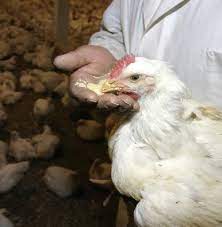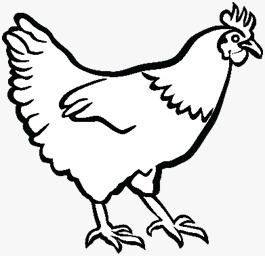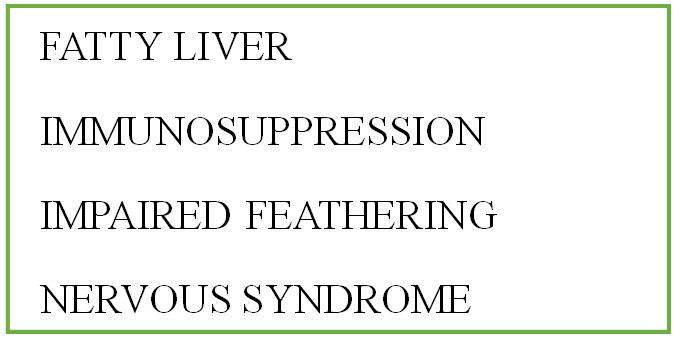
INTRODUCTION
Aflatoxins are a group of toxic metabolites produced by certain molds, primarily Aspergillus flavus and Aspergillus parasiticus. The concerned four aflatoxins are B1, B2, G1, and G2. When theB1 and B2excreted in milk is called M1 and M2.Among these, aflatoxin B1 (AFB1) is the most potent hepatoxic and poses significant health risks to poultry. The ingestion of aflatoxin-contaminated feed can lead to aflatoxicosis, a serious condition affecting various avian species, particularly young birds like chicks, ducklings, and turkey poults.
PERMISSIBLE LEVELS OF AFLATOXIN IN POULTRY FEED
Aflatoxin levels in human food, animal feed, and animal feed additives are regulated by the FDA and the EU.
- With the exception of cottonseed meal, for peanut products, corn, and chick starter and grower feeds: must have fewer than 20 parts per billion.
- Feed for mature poultry, including laying hens, must include less than 50 parts per billion.
- Less than 300 ppb must be present in cottonseed meal meant for poultry of all kinds and ages.
The feed ingredient most susceptible to aflatoxin are
- Groundnut oilcake
- Maize
SENSTIVITY TO AFLATOXIN
Goslings, ducklings, and turkey poults are highly susceptible to AFB1 toxicity. Domestic ducks and turkeys are highly susceptible to AFB1’s acute and chronic effects. In contrast to other poultry species, chickens are relatively resistant to acute aflatoxicosis (except from during embryonic development). In reality, even at relatively low doses of AFB1, poultry are quite susceptible.
The order of poultry species sensitive to aflatoxin is ducks (3ppb)> turkeys > Japanese quail> chickens(20ppb).
MECHANISM OF TOXICITY
The primary toxic effects of AFB1 are concentrated in the liver, where it induces severe damage characterized by:
- Hepatic Necrosis: AFB1 causes the death of liver cells, leading to liver dysfunction.
- Bile Duct Proliferation: The liver responds to damage by increasing bile duct formation, which can lead to further complications.
- Hemorrhage and Icterus: These symptoms indicate severe liver impairment and can result in jaundice due to the accumulation of bile pigments in the bloodstream.
Chronic exposure to AFB1 leads to significant health issues such as weight loss, reduced feed efficiency, decreased egg production, and heightened susceptibility to infections. Notably, ducklings are particularly vulnerable, with studies indicating a high incidence of hepatocellular tumors associated with prolonged aflatoxin exposure.
EFFECTS OFAFLATOXIN (AFB1)


PREVENTION AND MANAGEMENT STRATEGIES
Pre-Harvest Strategies
- Good Agricultural Practices:
- Implement crop rotation and tilling to reduce mold growth.
- Use proper fertilization techniques and pest control to minimize stressors that promote mycotoxin production.
- Harvest Management:
- Avoid harvesting lodged or fallen crops, as they may come into contact with soil and increase contamination risk.
- Timely harvest is crucial; delays can lead to increased mycotoxin levels due to late-season moisture.
Post-Harvest Strategies
- Storage Conditions:
- Store grains in dry environments to inhibit mold growth.
- Regularly clean storage bins and silos to prevent contamination from residual feed.
- Moisture Control:
- Monitor relative humidity levels in storage areas, as high humidity can facilitate aflatoxin formation. Adequate ventilation in poultry houses is also essential to maintain low humidity.
Dietary Supplements and Additives
Incorporating certain dietary additives such as glutathione or selenium has been shown to mitigate the effects of aflatoxicosis by enhancing detoxification processes within the liver.
- Adsorbents:
- Incorporate sorbent compounds like hydrated sodium calcium aluminosilicate (HSCAS) or calcium montmorillonite clay (NovaSil PLUS) into feeds. These bind aflatoxins and reduce their bioavailability.
- Organic Acids:
- Add organic acids such as propionic acid (0.5–1.5 g/kg of feed) to inhibit fungal growth in feeds.
- Yeast Derivatives:
- Use esterified glucomannan from Saccharomyces cerevisiae, which has shown effectiveness against aflatoxins and other mycotoxins.
- Nutritional Supplements:
- Provide a balanced diet supplemented with N-acetylcysteine, choline, methionine, and vitamin E to mitigate the effects of aflatoxicosis.
- Dilution of Toxicity level:
The contaminated feed having higher aflatoxin level can be diluted with normal feed without aflatoxin to reduce its level of toxicity below20ppb to minimize the huge economic loss to the farmers.
CONCLUSION
Poultry productivity and health are severely impacted by aflatoxins. Developing successful preventative methods requires an understanding of their toxicological impacts. Aflatoxin contamination hazards can be reduced by continuous feed quality monitoring and control, eventually protecting chicken health and increasing production efficiency.
1Bagavathi M, 2Kapilan P, 3Pasupathi Karu
1MVSc Scholar, Animal Physiology Division, ICAR – National Dairy Research Institute, Karnal-132001, Haryana, India.
2Third year,Arawali Veterinary College, Sikar- 332403, Rajasthan,India.
3Professor and Head,Animal Nutrition Department,Veterinary College and Research Institute, Tirunelveli-627358, Tamil Nadu, India.
Mail id – bagavathimuthappan55@gmail.com
















